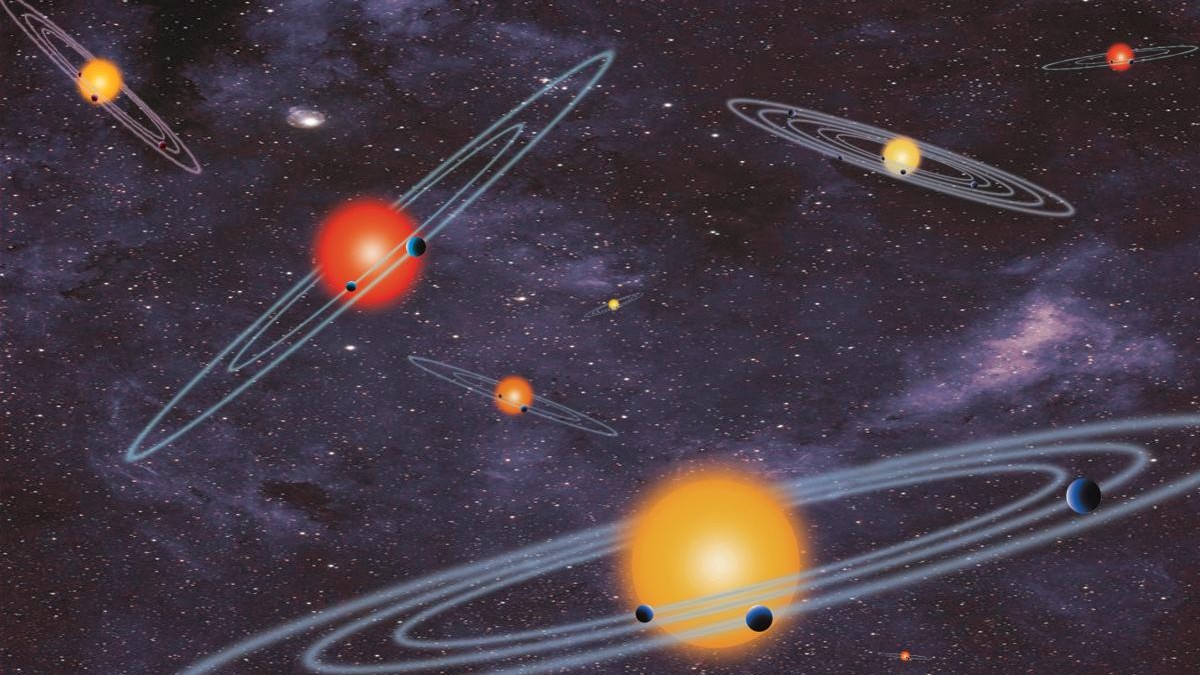Mathematicians find 12,000 new solutions to 'unsolvable' 3-body problem
Calculating the way three things orbit each other is notoriously tricky — but a new study may reveal 12,000 new ways to make it work.

The three-body problem is a notoriously tricky puzzle in physics and mathematics, and an example of just how complex the natural world is. Two objects orbiting each other, like a lone planet around a star, can be described with just a line or two of mathematical equations. Add a third body, though, and the math becomes much harder. Because each object influences the others with its gravity, calculating a stable orbit where all three objects get along is a complex feat.
Now, an international team of mathematicians claims to have found 12,000 new solutions to the infamous problem — a substantial addition to the hundreds of previously known scenarios. Their work was published as a preprint to the database arXiv, meaning it has not yet undergone peer review.
More than 300 years ago, Isaac Newton wrote down his foundational laws of motion, and mathematicians have been working on solutions to the three-body problem pretty much ever since. There is no single correct answer; instead, there are many orbits that can work within the laws of physics for three orbiting objects.
Related: Math's 'hairy ball theorem' shows why there's always at least one place on Earth where no wind blows
Unlike our planet's simple loop around the sun, orbits for the three-body problem can look twisted and tangled, like pretzels and scribbles. The 12,000 newly discovered ones are no exception — the three hypothetical objects start at a standstill and, when released, are pulled into various spirals toward one another via gravity. They then fling past one another, moving farther away, until the attraction takes over and they once again come together, repeating this pattern over and over again.
The orbits "have a very beautiful spatial and temporal structure," lead study author Ivan Hristov, a mathematician at Sofia University in Bulgaria, told New Scientist. Hristov and colleagues found these orbits using a supercomputer, and he's confident that with even better tech, he could find "five times more."
Three-body systems are quite common in the universe; there are plenty of star systems with multiple planets, or even multiple stars orbiting each other. In theory, these new solutions could prove extremely valuable to astronomers trying to explain the cosmos. But they're only useful if they're stable, meaning the orbital patterns can repeat over time without breaking apart, flinging one of the component worlds off into space. Just because they're theoretically stable doesn't mean they'll stand up to the many other forces present in a real star system.
Get the world’s most fascinating discoveries delivered straight to your inbox.
"Their physical and astronomical relevance will be better known after the study of stability — it's very important," Hristov said.
Juhan Frank, an astronomer at Louisiana State University who wasn't involved in the work, is skeptical that these orbits will turn out to be stable. They're "probably never realized in nature," he told New Scientist. "After a complex and yet predictable orbital interaction, such three-body systems tend to break into a binary and an escaping third body, usually the least massive of the three."
No matter what, though, these solutions are a mathematical wonder. According to Hristov, "stable or unstable — they are of great theoretical interest."

Briley Lewis (she/her) is a freelance science writer and Ph.D. Candidate/NSF Fellow at the University of California, Los Angeles studying Astronomy & Astrophysics. Follow her on Twitter @briles_34 or visit her website www.briley-lewis.com.


